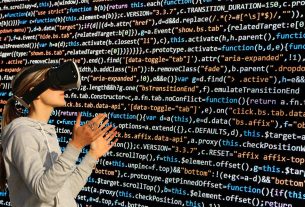How does AI work?
Artificial Intelligence (AI) has become an integral part of modern technology, revolutionizing industries and shaping the way we interact with computers. As programmers, understanding how AI works is essential for harnessing its power to create intelligent systems and applications. So, here you can delve into the fundamentals of AI, exploring its underlying principles, algorithms, and applications, and this article can serve as your guide if you want to create an AI of your own.
1. Foundations of AI
Machine Learning Basics:
- The first thing you need to do is understand the core concepts of machine learning, including supervised learning, unsupervised learning, and reinforcement learning.
- Next, you have to explore algorithms such as linear regression, logistic regression, decision trees, and neural networks, which form the building blocks of many AI systems.
Data Preprocessing:
- Learn techniques for cleaning, transforming, and preparing data for training machine learning models.
- Handle common challenges such as missing values, outliers, and feature scaling to ensure optimal model performance.
2. Algorithms and Techniques
Supervised Learning:
- Dive deeper into supervised learning algorithms, where models learn from labeled training data to make predictions or decisions.
- Implement popular algorithms like support vector machines (SVM), k-nearest neighbors (KNN), and random forests for classification and regression tasks.
Unsupervised Learning:
- Explore unsupervised learning techniques, where models extract patterns and relationships from unlabeled data.
- Study algorithms such as k-means clustering, hierarchical clustering, and principal component analysis (PCA) for tasks like clustering and dimensionality reduction.
Deep Learning:
- Delve into the realm of deep learning, a subset of machine learning focused on artificial neural networks with multiple layers.
- Understand architectures like convolutional neural networks (CNNs) for image recognition, recurrent neural networks (RNNs) for sequence modeling, and generative adversarial networks (GANs) for generating new data.
3. Applications of AI
Natural Language Processing (NLP):
- Learn how AI is applied to tasks involving human language, such as text classification, sentiment analysis, and machine translation.
- Explore frameworks like Natural Language Toolkit (NLTK), spaCy, and TensorFlow’s Text module for building NLP applications.
Computer Vision:
- Discover the use of AI in processing and analyzing visual data, including image recognition, object detection, and image segmentation.
- Experiment with libraries like OpenCV and TensorFlow’s Object Detection API to develop computer vision solutions.
4. Deployment and Integration
Model Deployment:
- Explore methods for deploying trained AI models into production environments, including containerization, serverless computing, and deployment platforms like TensorFlow Serving and AWS SageMaker.
Integration with Applications:
- Learn how to integrate AI capabilities into existing applications and systems using APIs, SDKs, and cloud services provided by major AI platforms like Google Cloud AI, Microsoft Azure AI, and Amazon AI.
Conclusion
As programmers, mastering the intricacies of AI opens up endless possibilities for innovation and problem-solving. By understanding the foundations, algorithms, and applications of AI, we empower ourselves to create intelligent systems that enhance efficiency, enable automation, and drive progress in diverse fields. With AI at our fingertips, the future of technology is limited only by our imagination and ingenuity!




